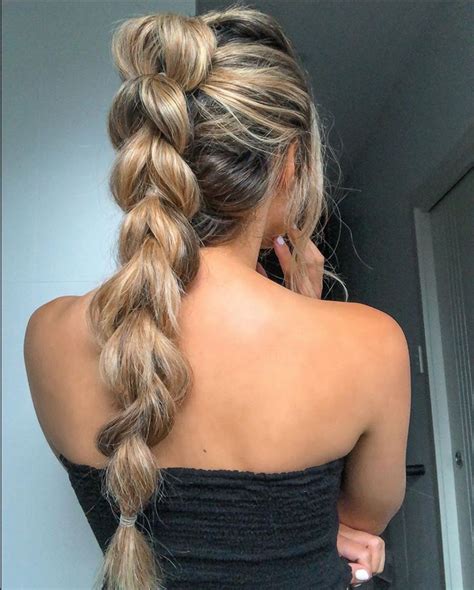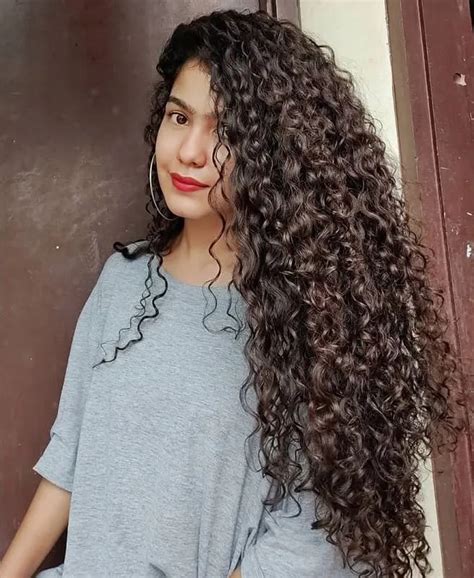Introduction
Indian curly hair is a captivating heritage, boasting unique curls, waves, and coils that have been revered for centuries. With over 1 billion individuals of Indian descent globally, embracing the beauty of curly hair has become a cultural movement.

Types of Indian Curly Hair
Indian curly hair falls into three broad categories based on curl pattern:
- Type 3: Loose curls ranging from loosely defined waves to tight, bouncy ringlets.
- Type 4: Coiled or kinky curls with a tight, zigzag pattern that varies in thickness and density.
- Type 5: Zigzag or spiral-shaped curls that are often densely packed and require specialized care.
Hair Science: Understanding Curly Hair
Curly hair is formed due to a unique hair follicle shape that produces oval-shaped strands instead of round ones. The oval shape causes the hair to push out into a curve, resulting in the characteristic curly pattern.
Benefits of Indian Curly Hair
- Volume and Body: Curls add volume and body to hair, creating a lush and voluminous look.
- Style Versatility: Curly hair can be styled in countless ways, from loose curls to tight ringlets, making it a versatile option for any occasion.
- Natural Texture: Curly hair embraces its natural texture, reducing the need for harsh chemicals or styling tools that can damage hair.
- Cultural Symbolism: Curly hair is an integral part of Indian culture, symbolizing beauty, femininity, and fertility.
Pain Points of Indian Curly Hair
- Frizziness: Curly hair is prone to frizz due to its porous structure, which absorbs moisture from the air.
- Dryness: Lack of natural oils can cause curly hair to become dry and brittle, especially in climates with low humidity.
- Detangling Challenges: Curls can easily become tangled, making it difficult to comb or brush without breakage.
- Styling Difficulty: Styling curly hair can be time-consuming and requires specialized products and techniques to achieve desired results.
Motivations for Embracing Indian Curly Hair
- Embracing Cultural Heritage: Many individuals of Indian descent are motivated to embrace their natural curls as a way to connect with their cultural roots.
- Seeking Natural Beauty: Increasing awareness of the beauty of curly hair has led to a growing desire to enhance and celebrate its unique texture.
- Reducing Hair Damage: Avoiding harsh chemicals and excessive styling tools can help protect curly hair from damage.
- Promotes Hair Confidence: Embracing natural curls can boost self-confidence and a sense of individuality.
Pros and Cons
Pros
- Adds volume and body to hair
- Versatile styling options
- Embraces natural texture
- Cultural significance
Cons
- Prone to frizziness
- Can be dry and brittle
- Detangling challenges
- Styling difficulties
Tips for Caring for Indian Curly Hair
- Moisturize Regularly: Use deep conditioning treatments and hair moisturizers to replenish moisture and combat dryness.
- Avoid Sulfates and Harsh Chemicals: Look for sulfate-free products to prevent stripping the hair of its natural oils.
- Use a Wide-Tooth Comb: Minimize breakage by detangling gently with a wide-tooth comb.
- Embrace Air Drying: Avoid heat styling whenever possible to prevent damage and promote natural curl definition.
- Seek Professional Advice: Consult with a hairstylist experienced in curly hair care for personalized guidance and product recommendations.
Hair Care Products for Indian Curly Hair
- Natural Oils: Coconut oil, argan oil, and olive oil provide deep hydration and nourishment.
- Leave-In Conditioners: Lightweight leave-in conditioners help detangle, define curls, and reduce frizz.
- Gel Creams: Gel creams add hold and definition while still maintaining softness and flexibility.
- Curly Hair Shampoos: Formulated with gentle cleansers and moisturizing ingredients to cleanse without stripping hair.
- Curl Enhancing Products: Mousses, sprays, and creams enhance curl formation and reduce frizz.
Tables for Reference
| Hair Type | Curl Pattern | Characteristics |
|---|---|---|
| Type 3 | Loose Curls | Loosely defined waves to tight, bouncy ringlets |
| Type 4 | Coiled or Kinky Curls | Tight, zigzag pattern that varies in thickness and density |
| Type 5 | Zigzag or Spiral-Shaped Curls | Densely packed curls with a distinct zigzag or spiral shape |
| Pain Points | Motivations |
|---|---|
| Frizziness | Embracing Cultural Heritage |
| Dryness | Seeking Natural Beauty |
| Detangling Challenges | Reducing Hair Damage |
| Styling Difficulty | Promotes Hair Confidence |
| Care Tips | Benefits |
|---|---|
| Moisturize Regularly | Maintains moisture, reduces dryness |
| Avoid Sulfates and Harsh Chemicals | Protects natural oils, prevents stripping |
| Use a Wide-Tooth Comb | Minimizes breakage |
| Embrace Air Drying | Prevents heat damage, promotes curl definition |
| Seek Professional Advice | Personalized guidance, tailored product recommendations |
Conclusion
Indian curly hair is a testament to the diversity and beauty of human hair. Embracing its unique texture not only enhances aesthetic appeal but also fosters a sense of cultural pride and self-acceptance. By understanding the challenges and motivations associated with curly hair, individuals can develop effective hair care routines that celebrate its natural beauty.
